Role of Artificial Intelligence in Education 2025
19 May, 2025
10 min read
19 May, 2025
10 min read
Table Of Content
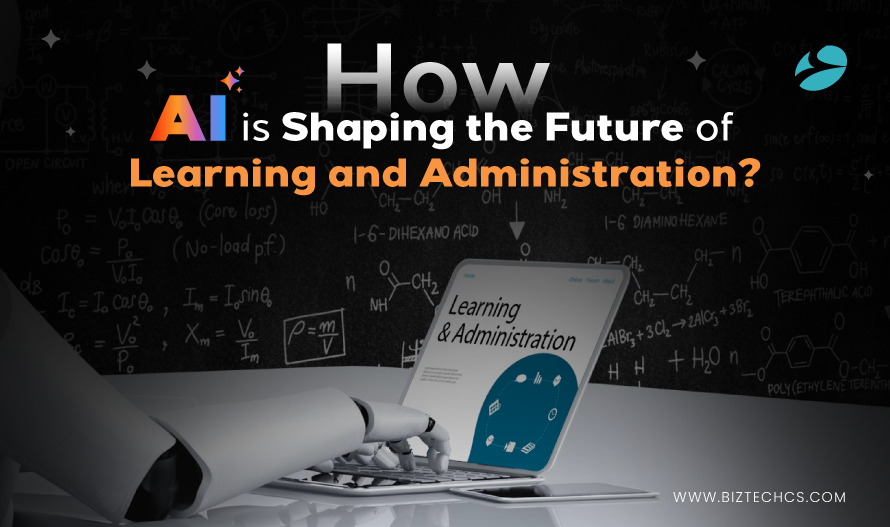
In education, traditional methods often overwhelm teachers and students. Despite trying new models, adding more resources, and improving systems, challenges kept multiplying. Students drifted, lessons felt too broad, and teachers struggled to keep up with grading and lesson planning.
Then, a simple yet powerful change was made: a principal introduced an AI grading tool. The result? Teachers reclaimed nearly 7 hours weekly, and student performance surged by 18% in test scores and participation. This shift was not just a one-off success; it’s becoming a standard across schools, with 47% of education leaders now using AI tools daily (source).
In this blog, we explore how AI is no longer a futuristic concept but a transformative force in today’s education system, driving real-world classroom and administration improvements, with the support of IT solutions for education industry.
Artificial intelligence is no longer a new idea in education — it is being put into practice with a definite purpose and quantifiable outcomes. From classrooms to school offices, AI is being employed to address actual needs, not theoretical ones.
From machine learning to natural language processing and computer vision, these technologies now drive tools that assist students in learning more efficiently and enable staff to prioritize high-impact work.
The future of AI in education is not to supplant teachers but to aid them, enhancing efficiency without sacrificing quality. Two dominant uses have gained momentum: academic enrichment and operational effectiveness.
In one instance, an average-sized university utilized AI-powered analytics to decrease student dropouts by detecting risk indicators at the earliest stages. This is part of a broader transformation; based on EY, the take-up of AI within education sector organizations is gathering pace because it has delivered proven results in domains such as performance monitoring and student guidance (source).
Artificial intelligence applications within education are already having a material impact — subtly but firmly — on how institutions educate, care for, and develop.
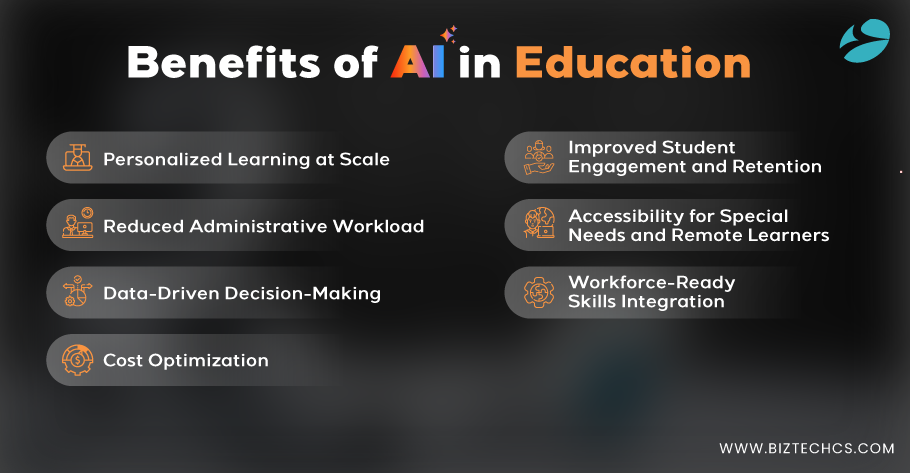
Each classroom contains students who learn at varying rates. Some pick up on things quickly, but others require more time. AI technology now bridges this gap. These systems monitor learning patterns and adjust lessons to meet each student’s rate.
One school in Singapore noticed better exam results just by utilizing AI-powered learning platforms for a single semester. This indicates how AI applications in education can result in more targeted and inclusive instruction.
One of AI’s significant benefits in education is its ability to streamline administrative tasks, allowing staff to focus on higher-value activities. For instance, a university that previously employed six staff members to handle student inquiries reduced the team to just two, thanks to introducing an AI-driven support system.
This AI system took over repetitive tasks like answering routine questions, managing scheduling, and filling out forms. As a result, the remaining staff could allocate more time to strategic student support, academic planning, and engagement.
This not only saved time and resources but also improved service quality. The efficiency gained through AI applications is one of the most practical and impactful changes in education today, proving that AI supports the learning environment and enhances operational effectiveness.
AI in education plays a crucial role in identifying and addressing student issues before they escalate.
For example, by tracking attendance and engagement patterns, AI can promptly flag when a student is at risk of falling behind, such as after missing two consecutive days of class. This early warning system enables teachers and administrators to intervene quickly, offering the necessary support to keep the student on track.
As a result, students receive timely assistance, improving their overall engagement and academic performance. This proactive approach to student support helps prevent issues like disengagement or dropout, ensuring every student stays involved and succeeds in their learning journey.
Leadership decisions are more effective when supported by data. AI systems now synthesize information from academic performance, behavioral patterns, and engagement levels. That gives teachers a better understanding of what’s successful and what’s not.
For instance, one school utilized this information to restructure its schedule, enhancing both faculty productivity and student achievement. That’s the actual effect of AI on education: faster, better-informed responses. It makes sense of messy systems without the guesswork.
A visually impaired student once required a full-time assistant in class. Now, AI applications offer real-time audio descriptions and personalized content formats. Another student residing in a rural area now joins sessions virtually, aided by AI translation and low-bandwidth content delivery.
These applications erase barriers silently but surely. They’re not confined to graduate campuses—they’re already deployed in public schools and smaller universities. The work of AI in schools is very human.
Operating a campus comes with significant costs. AI helps save money by streamlining tasks that previously required large teams or manual labor. One college saved a substantial amount by applying AI to monitor energy consumption and optimize building scheduling. Another college saved by implementing automated grading for low-stakes tests.
These transitions didn’t require significant investments, but they highlight just a few of the ways AI in the education industry can deliver long-term savings through targeted, small-scale changes.
Many students graduate with degrees, but they don’t all graduate with industry-expected skills. AI platforms can now match curriculum with real-world job trends. Institutions are leveraging these platforms to match lessons with the demands of the workforce today.
Even a vocational school allows AI to recommend modules based on new jobs in tech and healthcare. Students have a better roadmap. And institutions remain germane in a rapidly evolving marketplace — one of the lesser-seen facts regarding AI in schools, but one imbued with profound worth.
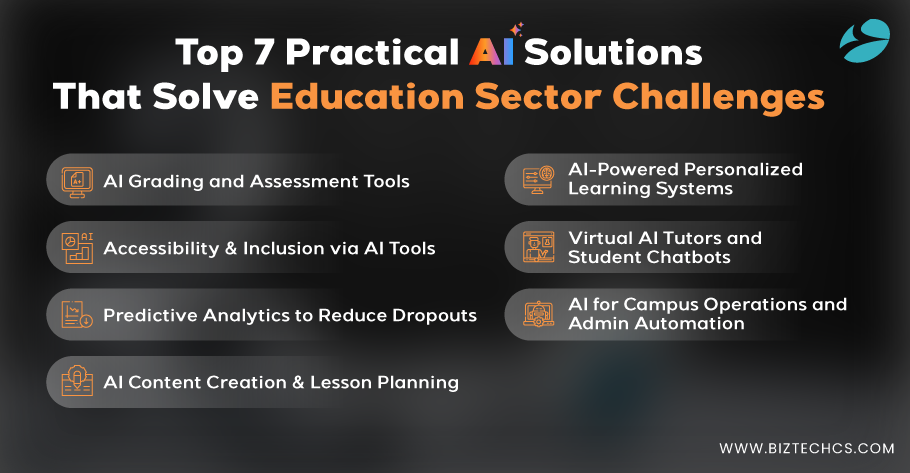
Teachers at a local high school were struggling to accommodate student variance. Some learned quickly, some more slowly. They implemented an AI-driven system that customized the learning material for each student’s speed.
The AI reviewed answers and changed the assignments’ difficulty level in real time. Students who required extra time were given extra help, while others could proceed without delay.
The payoff was instant: a 30% retention boost and better exam scores overall. This shows how AI in education can make every student’s learning experience more tailored to their needs.
Key Benefits:
Grading previously took a lot of a teacher’s precious time. University teachers spent hours grading assignments, with hardly enough time left for other essential activities. But once they installed AI grading tools, everything altered. The system rapidly graded multiple-choice questions, short answers, and even essays.
Teachers gained over 5 hours of free time weekly, and students had faster feedback. Consequently, the general classroom experience was enriched, with more time devoted to interaction and support. This is a straightforward case on how the use of AI in learning can maximize efficiency and speed of feedback.
Key Benefits:
Late at night, students were frequently questioned, but they had no one to turn to for help immediately. This was a problem for both students and staff. By implementing AI chatbots and virtual tutors, a particular institution ensured students could access assistance at any hour of the day or night.
The chatbots could respond to frequently asked questions, assist students with assignments, and even offer career guidance. With 24/7 AI tutors, the school experienced lower dropout rates and higher student satisfaction.
They offer 24/7 support, which helps students remain on track. Education with AI enables ongoing assistance so no student will feel left behind.
Key Benefits:
At one university, daily operations were in disarray. Admissions, scheduling, and fee reminders were prone to delay and human error. AI programs stepped in and automated these back-office processes so that streamlined, efficient processes could be carried out.
The AI handled repetitive functions, ensuring the right scheduling and sending reminders on time. Students, staff, and faculty could allocate more time towards education and communicating with students rather than task repetition.
The institution experienced increased operational effectiveness and administrative cost savings over time. This is a fine example of artificial intelligence solutions in education that optimize campus operations.
Key Benefits:
After automating campus operations, one institution wanted to go further. They worked with a provider offering AI ML development services to design AI models specifically suited to their academic processes. These models helped track student progress, personalize digital learning paths, and improve how faculty supported at-risk learners. Custom AI tools like these created a better match between system performance and real classroom needs.
A large community college had high drop-out rates, but they did not know why. When they included predictive analytics, the college began tracking student activities like attendance, engagement, and assignment submissions.
The system recognized students who were in danger of dropping out, and the staff was able to step in early. This proactive approach resulted in a 40% reduction in dropouts.
The college could intervene at the right time by catching and resolving issues early, before they turned into crises. This is one clear example of how AI affects education, using data to make decisions that prevent student loss.
Key Benefits:
Teachers tend to spend more hours developing lesson plans than teaching itself. For one school, they discovered that AI can make this easier by recommending pertinent content, designing quizzes, and creating multimedia content connected to the curriculum.
The AI saved teachers’ prep time and ensured that the content was consistent and focused on learning objectives. Teachers could now spend their time interacting with students, instead of wading through resources galore. This improved classroom productivity, with more time for students and experiential teaching. AI not only saves time, but it also improves lesson quality and uniformity.
Key Benefits:
A hearing-impaired student at a local school struggled to keep up during lectures, and another student with poor English struggled to understand the content.
By incorporating AI-driven tools such as real-time transcription, auto-translation, and captioning, the school could equalize the playing field for all students.
These tools enabled students to access the same content, irrespective of their physical capabilities or language skills. The outcome was an inclusive learning experience, with each student able to engage to their full potential.
AI technologies didn’t merely boost learning; they ensured fair access to education for all students, addressing diverse requirements.
Key Benefits:
In a history class, students no longer sit with textbooks and imagine ancient Rome. Instead, they walk the city streets through AR and VR goggles, experiencing their surroundings. AI enables this kind of immersive experience, integrating technology to give learners tangible experiences that put the subjects into their world.
AI tracks student responses and adapts the learning environment on the fly. The possibilities are endless, from scuba diving to explore the underwater world to taking a helicopter tour over the Egyptian pyramids.
Education in the future will be marked by such experience-based learning, where students don’t just learn theory, but live through the environment they are trying to understand.
Within a classroom setting, a student’s distraction sometimes escapes attention until it’s past the point of recovery. Emotion AI fixes this by reading facial and tone-of-voice cues to identify when learners are frustrated, bored, or confused.
With this technology, teachers get instant feedback about student engagement. If a learner begins to tune out, the AI can nudge the teacher to shift the lesson or provide extra support. This change will enable more customized learning in real time, where emotions dictate the speed of instruction.
The use of AI in education will be crucial in maintaining students’ interest, motivating them, and keeping them on course.
Suppose the teacher does not work alone. AI-powered co-teaching assistants can assist with grading, lesson planning, and determining which students require additional attention. These assistants review student data and recommend resources, customized learning pathways, or areas of possible difficulty.
Teachers can focus more on developing creativity and critical thinking, as AI can handle repetitive work. Indeed, such AI assistants will even generate personalized quizzes and study guides for students based on their learning patterns.
In the near future, AI will be an indispensable companion in the classroom, assisting teachers in improving education for everyone.
As AI gets increasingly embedded in education, making it ethically sound will become the key. AI models adopted by institutions should be efficient but also equitable, transparent, and unbiased.
These models should be engineered to explain decision-making processes and help students and educators understand why things happen.
For instance, AI will identify when particular groups are disadvantaged by algorithms so that adjustments can be made without delay. As AI’s influence on education expands, making these systems ethical will ensure that people trust technology.
Institutions will require transparent policies that dictate how AI models function to provide equity and fairness in all decisions.
The use of AI in education has gone from a futuristic idea to an everyday solution, already transforming lives. Institutions and schools are now seeing firsthand the impact of artificial intelligence tools on classroom and administrative education as they transform both.
With AI-driven tools, every student can now learn at their own pace, thanks to personalized learning. Teachers, relieved of the time-consuming grading and administrative tasks, can spend more time on student interaction and encouraging creativity.
Predictive analytics is enabling institutions to identify students who are at risk so that interventions can take place ahead of time, and dropout rates can be decreased. The future for education looks bright, with AI making the learning environment more inclusive, efficient, and effective.
By integrating AI-driven solutions with higher education ERP systems, institutions can streamline their operations while enhancing student experiences.
At BiztechCS, we have extensive experience integrating AI-driven solutions into educational frameworks, streamlining teaching and administrative processes.
Our expertise helps institutions leverage the power of AI to enhance learning experiences, improve student retention, and boost operational efficiency.
By partnering with us, educational organizations can embrace the future of AI in education and ensure they remain competitive and innovative in a rapidly evolving sector.
AI is changing education by personalizing learning and improving operational efficiency. It helps educators automate tasks like grading and provides students with tailored learning experiences.
AI impacts education by enhancing both teaching and learning processes. It allows for more focused support, reduces administrative work, and helps improve student engagement.
AI in education refers to using artificial intelligence technologies to support learning and administrative tasks. It includes tools like personalized learning systems, virtual tutors, and predictive analytics.
The role of AI in transforming education is to improve the learning experience and streamline operations. It assists teachers, helps students learn independently, and ensures timely intervention.
AI positively impacts education by increasing efficiency and making learning more accessible. It supports teachers with automation, offers personalized student experiences, and reduces dropout rates through early interventions.
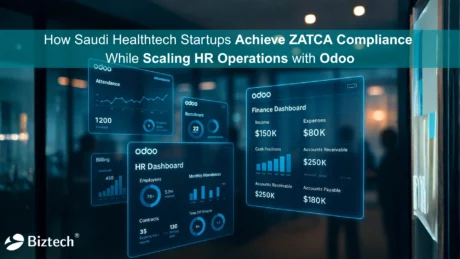
Odoo
50
By Uttam Jain
28 Nov, 2025
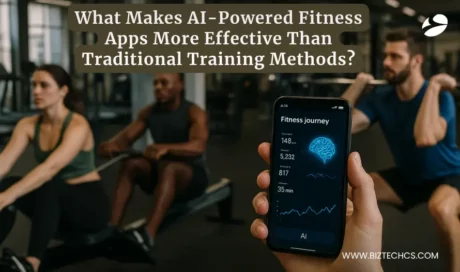
Artificial Intelligence (AI)
113
By Afzal Qureshi
27 Nov, 2025

Odoo
67
By Uttam Jain
27 Nov, 2025